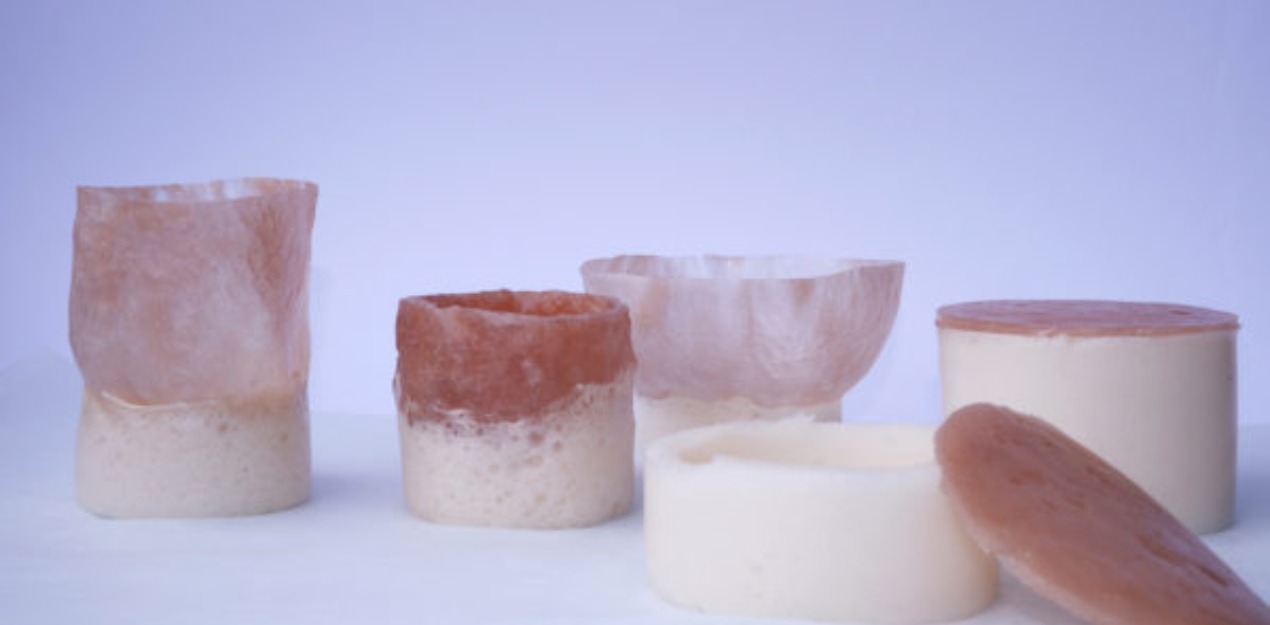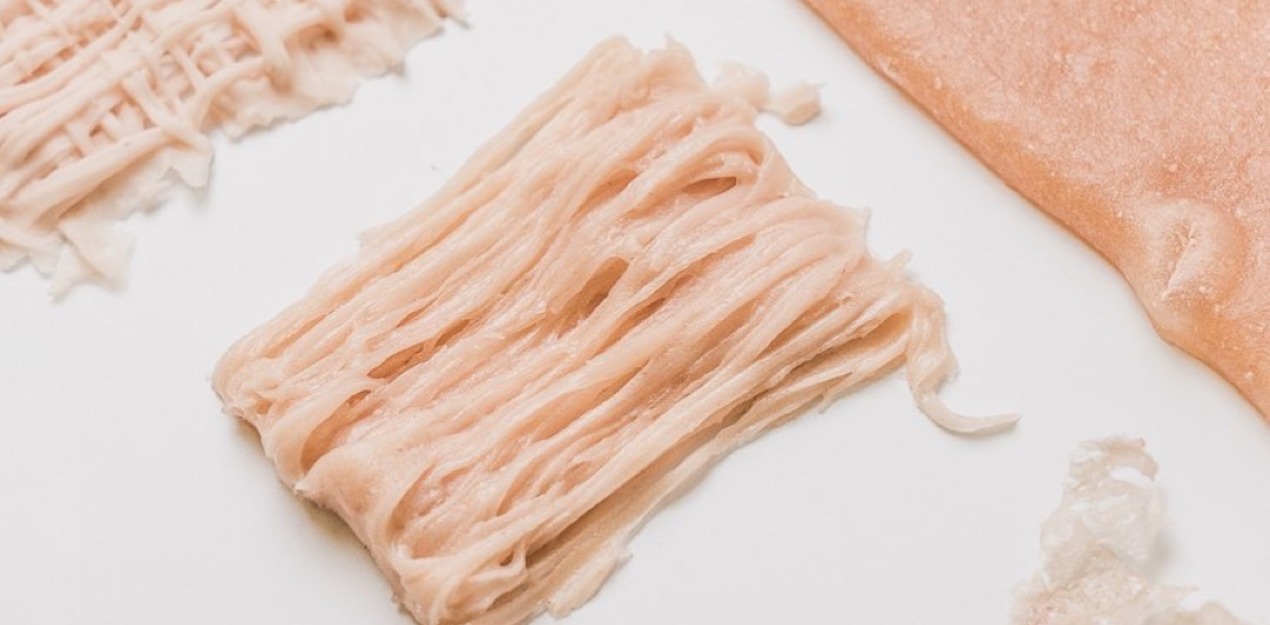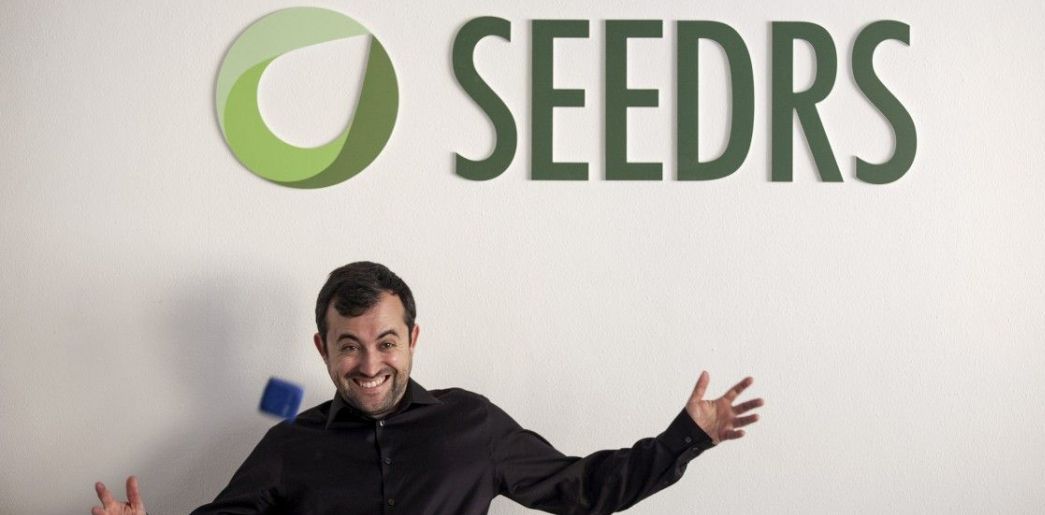AÑO
2021
CATEGORÍA
Trabajo
OBJETIVOS
Industria, innovación e infraestructura, Producción y consumo responsables
PAL. CLAVE
Bioplastic, new materials, 3d printing, research, biodegrable
PAÍS
United Kingdom
CRÉDITOS
Paula Nerlich
LINK
https://materialdistrict.com/article/bioplastic-aquafaba-chickpeas/
Aquafaba
Research for compostable bioplastics made from the by-product from the preparation of legumes
Aquafaba is the viscous water in which legume sees have been cooked. The substance is a by-product from the preparation of legumes and, depending on the legume, can have emulsifying, foaming, binding, gelatinising, and thickening properties.
The liquid from cooking chickpeas is mixed with other ingredients and cooked, before it is shaped in the desired form. Currently, the shaping is done by hand, but according to Nerlich, the material shows great potential for mechanical manufacturing and thus industrial production, or even 3D printing.
The bioplastic is naturally light pink to terracotta coloured, depending on the density and thickness, but can be coloured with natural or food colourings. The structure can be flexible or hard, again depending on the density and thickness. The bioplastic is completely vegan and biodegradable.
The designer used the material to make tableware, which she combined with foam. Currently looking for industrial collaborators to develop a manufacturing





